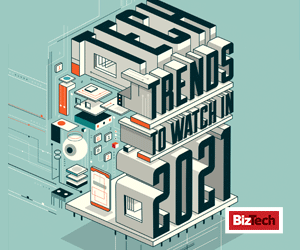BIZTECH: How have businesses’ tech needs evolved this year?
Duarte: We find companies are really focusing on how to maintain productivity through a much more virtual and distributed workforce. We’re seeing organizations have accelerated their digital transformations by two to three years. To maintain productivity, what do leaders and managers need to be focused on and how do they enable it? We’ve been focusing on what we call the six C’s.
The first is creating. What do workers need to get their individual work done? The second is communication, and there’s more than one mode of communication. People used to say, “I sent two emails out on this, so people should know.” Well, that’s not how much of your workforce receives and retains information.
The third is coaching. Now that we’ve all gone virtual, how do we tech-enable coaching relationships? The next is community, and this is the one that a lot of folks are really struggling with, the informal connection. This is where some of the burnout is coming from, working alone in your home all day. The fifth is collaboration. Companies are very focused on that, and there are a lot of technologies around it. The sixth is commitment. How do you get folks to really want to take the helm together, and how do you enable that with technology?
WATCH: Learn how to lead an organization with technology as a core capability.
BIZTECH: What are organizations failing to do to enable community, collaboration and commitment?
Duarte: Most folks already have the instant messaging and chat room technology, and more are getting the digital whiteboarding technology. But how do you get the workforce to use it?
That gets to digital upskilling. That’s become a real requirement. What that means is getting everyone comfortable with new technology. For example, people are reticent to do virtual whiteboards, so how do we create some fun around that? Folks who can combine digital upskilling with some fun — when people have this great fun experience and don’t even know they’re learning a new skill, but behind the scenes you’ve really planned out how to use your new virtual whiteboard — that’s success. Then that team is able to use these technologies for business purposes. You’re also creating community when you do that.
BIZTECH: Are organizations changing their views on how much people need to be in the office in the long term?
Duarte: They’re breaking down what the work really is by their need to create, communicate and coach, and by how you build community, collaboration and commitment. What we’re finding is that the tech is available and working well across many of these dimensions. However, collaboration is the area where folks are asking, “How tech-enabled is that?” Often, collaboration is the main reason people need to be in the office, and so we’re creating schedules and structures for teams to come into the office to collaborate as a team or with different teams, because they don’t yet have the tech that’s enabled for the type of collaboration they’re doing.













